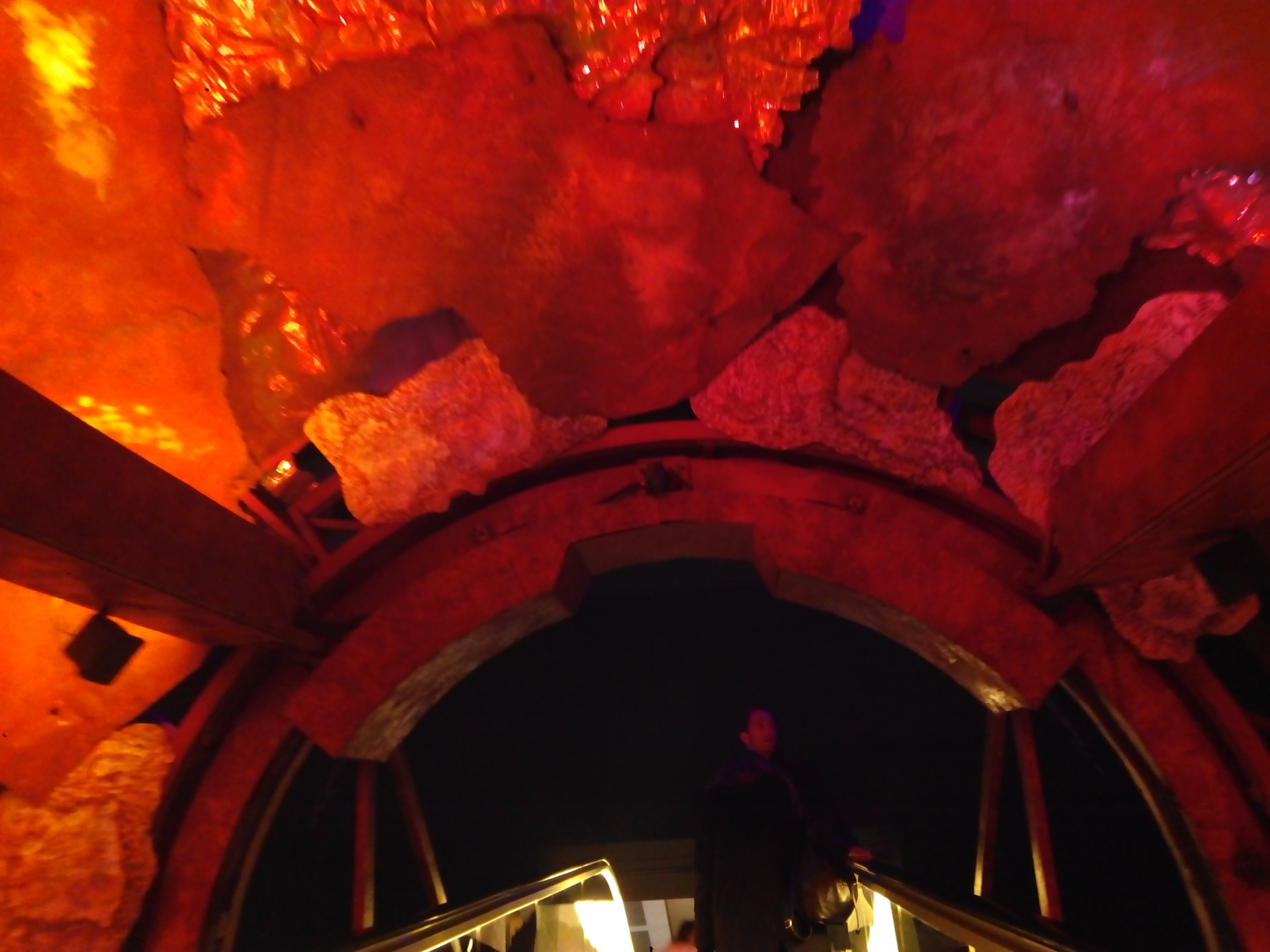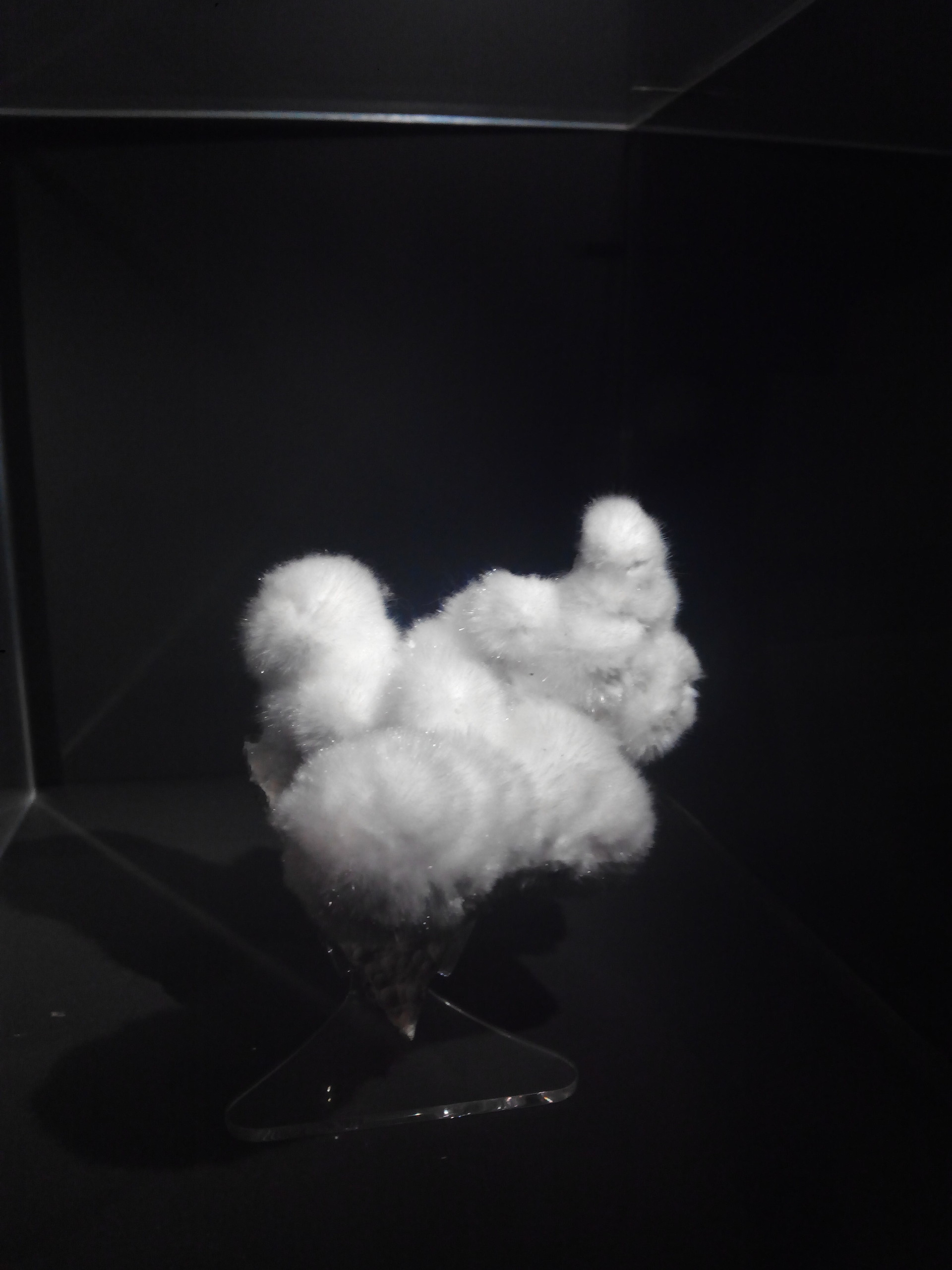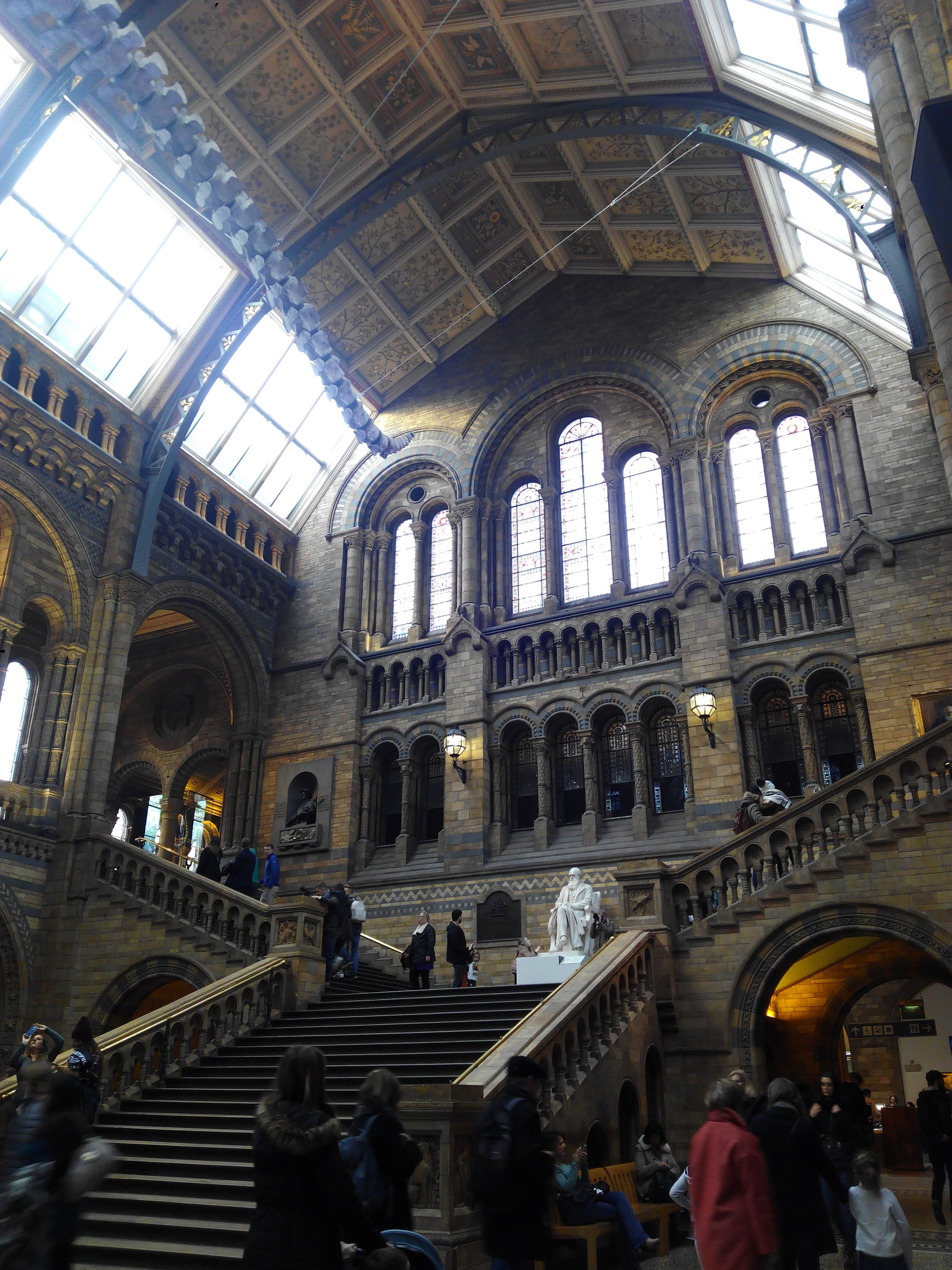A visit to the past to better understand the present.
Hello again to my brave and adventurous readers, lovers of natural history and of free museums!
In this post, I'm going to tell you about one of my favourite universities in London, in my top three along with the Tate Modern and the Science Museum.
The Natural History Museum, London
Situated on Exhibition road, a road that has numerous points of cultural interest, this is where you'll find the building, its facade's colours of grey, red and brown tones contrasting with the green vegetation of its outdoor areas.
In the month of December, when we visited this museum, you'll find a little attraction area outside of it, it has a carousel and an ice-skating rink, but we were more interested in seeing the museum, so I'm going to tell you about my experience.
As you know, the vast majority of museums in London have free entry, which doesn't get you into some of the exhibition, you'll have to pay for them, but I didn't have to pay anything to get into this museum.
From the reception hall, we followed the route to the left, which took us to a huge escalator that took us on a journey to the centre of the Earth.

It was an incredible sight, as you can see in the picture, the roof of the main entrance was covered in rocks (they weren't real) that were lit up by red coloured lights, which made it feel like you were going through the inside of a volcano...
There's a real stegosaurus skeleton at the foot of the escalator, which was only missing a couple of its vertebrae that would make up its tail:

As you pass by this incredible fossil discovery, you'll find an escalator that will take you to the next floor up, where you can look at the Milky Way constellations it has on its walls.

The museum has various different parts. As well as parts dedicated to the centre of the Earth, volcanic eruptions and formations inside of the Earth, which explains how geysers or thermal baths are formed, there's also a huge, incredible exhibition about minerals and rocks... And that was where we spent the most time during our visit to the museum.
And that's because of the incredible variety of minerals from all over the world found on its crystallised displays and shelves, each one of which is more interesting than the last and they have information panels giving the origin and formation of each mineral.

In this corridor, there is a space dedicated to the use of minerals, meaning, how they have been used throughout history and they have objects and tools that have been used to sculpt or manipulate them to be used by humans. It also talks about the effect of mining or of the exploitation of some mineral deposits, since, as we know, everything has its advantages and disadvantages.
For those who love geology or interesting things, I think that you'll really enjoy this part of the museum.
What's more, all of the areas of the museum have interactive panels which you can use a screen or a mechanism to learn about the area of the museum you're in.
The museum is enormous and after getting lost in its different rooms a few times, you'll end up back in the main room. It has the same type of architecture as the facade and it has a statue of Charles Darwin, the father of evolution.

This room, is in itself pure artistry, you only have to see the beautiful arches underneath the stairs and that create the feel of a huge and open space. There isn't a door to get into this rooms, just corridors that connect it to the rest of the museum at various points.
When you get to this point, aside from admire the statue of Darwin, you'll be amazed by the whale skeleton, suspended in midair by cords anchoring it to the ceiling. The photo doesn't do it justice, but the skeleton is gargantuan, huge and bestial.

If you go up the stairs, you'll find some balconies decorated with beautiful gold detailing and that are a great meeting point if you get separated from your group. It was a great help to us.
Around this space, you can find rooms about biology, from birds to insects, going from terrestrial and aquatic mammals, to extinct beings like dinosaurs.
I remember the entrance to the museum's restaurant had a model of two velociraptors in action, they growl and have fur, it was very well done and it's definitely one of the biggest attractions to the museum.
Without a doubt, I really got to admire this place, because of the huge variety of rooms it has and how much you can learn about the world, human beings and everything around us there. You definitely feel very small when you leave the museum, since there is so much that is so much bigger than us around.
And to think, only a few centuries ago, that we thought that we were the centre of the universe...
I hope that you've liked this post about the Natural History Museum in London, it's something you absolutely have to visit when you're in the British capital.
Thanks for reading and I hope you'll keep enjoying these zero cost educational opportunities!
Don't forget to have a look at this definitive guide to London in four days! You'll find everything you need to know if you're interested in going on a quick trip to London.
Photo gallery
Content available in other languages
Rate and comment about this place!
Do you know Natural History Museum? Share your opinion about this place.





















